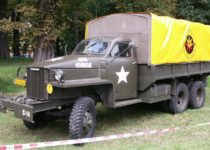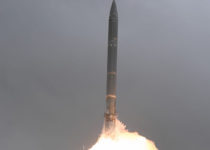Why Tank On Tank Warfare Is A Waste Of Resources
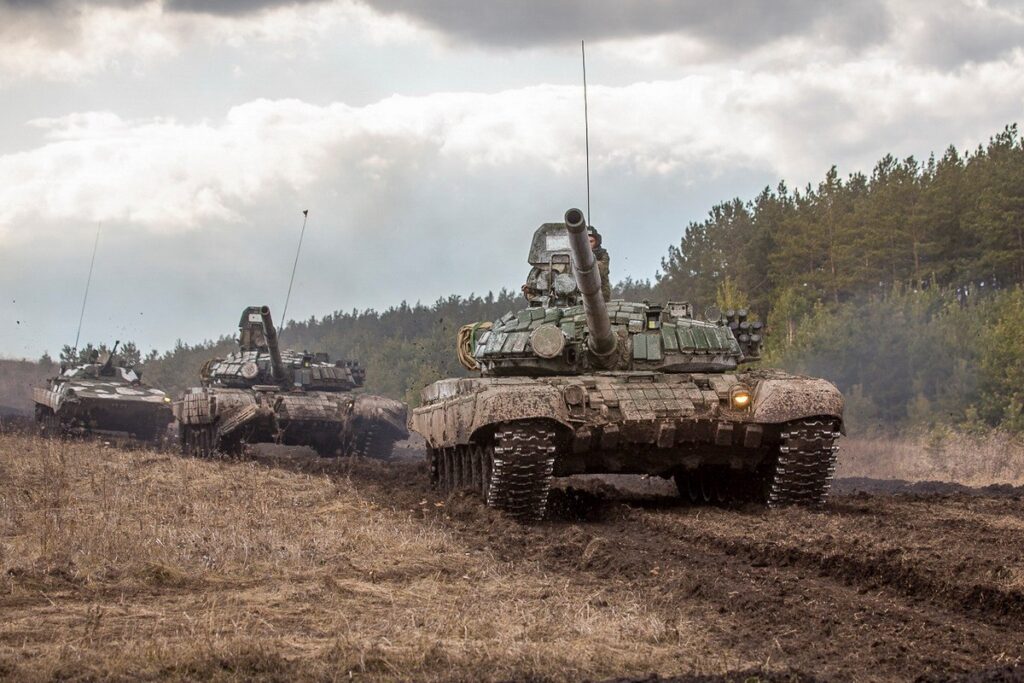
Tank on tank warfare looks sexy for sure, and has been a subject of endless debates on online forums a well as extremely popular games. It’s romantic appeal though, belies something not so sexy- tanks were never built to take on other tanks, and using them to take on other tanks means that you, as a military tactician or logistician, are not doing a good job. Using a tank to take on another tank, unless absolutely necessary, is a criminal wastage of a vastly capable, useful, and expensive resource, that could work wonders for you if used differently. This article explains why.
Tanks Were Built To Take On Anything But Tanks
Tanks were originally built to take on infantry, fortifications, and various vehicles. Sure, they were also built to be capable of taking on other tanks. But that was never their primary task. The very first tank, the British Mark 1, was developed to break through enemy trenches and razor wires, to end the seemingly never ending, static trench warfare of World War 1.
In other words, tanks were meant from the very start, to change wasteful and attrition prone static warfare, to high mobility warfare that could quickly achieve objectives like breaking through the enemy defences, neutralizing enemy instillations in the rare, encircling enemy forces, and capturing territory, instead of being bogged down in one place trying to gradually push the enemy back. In Warld War 2, this new form of warfare characterized by highly mobility, utilized very productively by the Germans, was called the Blitzkrig, and used tanks as it’s centrepiece. As tanks started to become a force to reckon with, measures started to be devised to take them on. But those measures did not include tanks themselves unless absolutely necessary.
Look at it this way- as combat aircraft advanced, they evolved into different types, like ground attack aircraft, interceptors, air superiority aircraft, reconissance aircraft, electronic warfare aircraft, and so on. Among these, the interceptors and air superiority aircraft were built from scratch to take out enemy aircraft. They are dedicated aircraft hunters. The tank analogue of these fighters though, wasn’t a tank, but a tank destroyer. And even tank destroyers have mostly fallen out of favor after World War 2. Even during World War 2, the platforms that were primarily tasked with taking out tanks were antitank guns. To understand why this was the case, let’s look at the logistics of using these guns vs using tanks.
Imagine that in World War 2, you lure a column of enemy tanks into an ambush, in a pocket surrounded by antitank guns. These antitank guns, staying hidden, would be well suited to take out the enemy tanks. Theoratically, you could also use your own tanks instead of antitank guns. But why would you use expensive and highly mobile tanks in stationary positions to take on enemy tanks, risking losing these platforms, when you could use far cheaper and thus expendable antitank guns in these positions, where not much mobility would be needed?
Instead of using tanks to ambush enemy tanks, it’s better to use them to support infantry in your own offensive operations, to break into the rear of the enemy lines through weak points, and take out enemy supply trucks, ammunition and fuel storages, infantry, bunkers, and air defense systems. The high mobility of tanks would be truly useful in these offensive missions. And missions like antitank ambushes, that don’t require as much mobility, could be carried out using platforms like antitank guns.
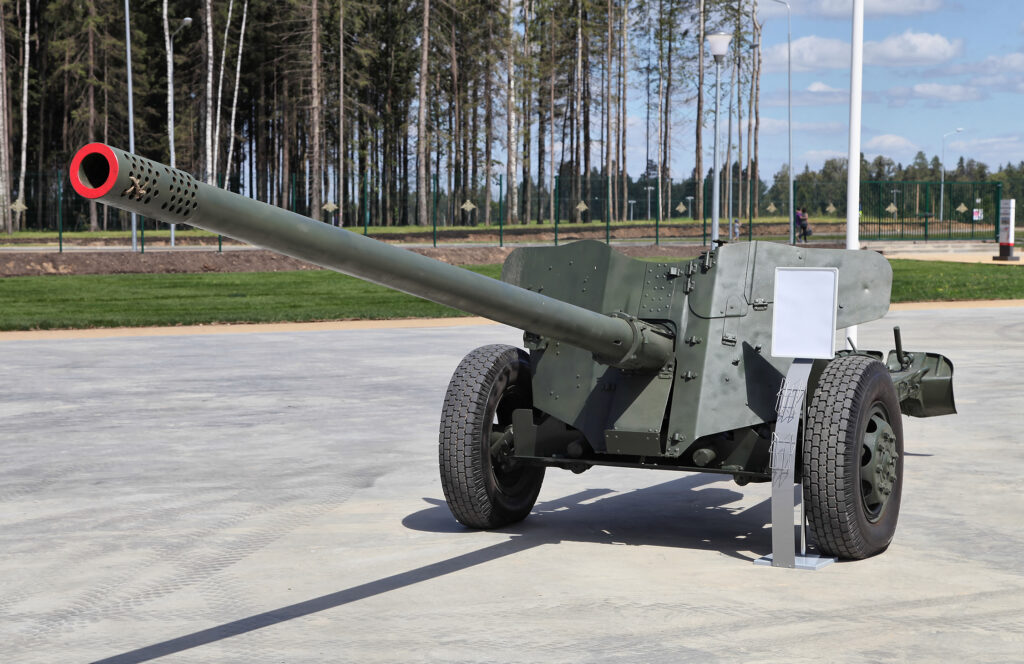
Tanks were frequently used in this way in World War 2, to cut off enemy supplies from the rear and encircle enemy forces. And in the Yom Kippur war, the Israeli Air Force could start to play a relavent role in bombing Egyptian instillations only after the Israeli tanks broke through the Egyptian lines, entered the rare, and took out the Egyptian air defense systems that had until then prevented the Israeli warplanes from operating freely (read more about it here). This was the exact opposite of what’s usually expected in modern warfare- that the air power will first need to soften the enemy defenses before ground forces, including tanks, can play a relavent role in the battlefield.
This is not to say that ambushing tanks does not ever require mobility. After bringing down a volley of rounds on the enemy tanks during the ambush, you may want to immediately leave that ambush site to escape retaliation by the enemy tanks, artillary, helicopters, or aircraft, and regroup at a different site for the next ambush. This requires your platforms to be highly mobile. But even this does not justify using tanks, since cheaper mobile platforms are available. In World War 2, this work could be carried out by mobile guns like Sturmgeschütz III (StuG III), and in the modern battlefield, it could be carried out by IFVs (infantry fighting vehicles) equipped with antitank missiles, like the Bradley.
The Wikipedia quote below explains the suitability of mobile guns like StuG III for defensive antitank role during World War 2.
The StuG assault guns were cost-effective compared to the heavier German tanks such as the Tiger I and the Panther, although as anti-tank guns they were best used defensively as the lack of a traversable turret and its generally-thin armour was a severe disadvantage in the attack role. As the situation for the German military deteriorated further later in the war, more StuGs were built than tanks, particularly due to ease of production.
Source
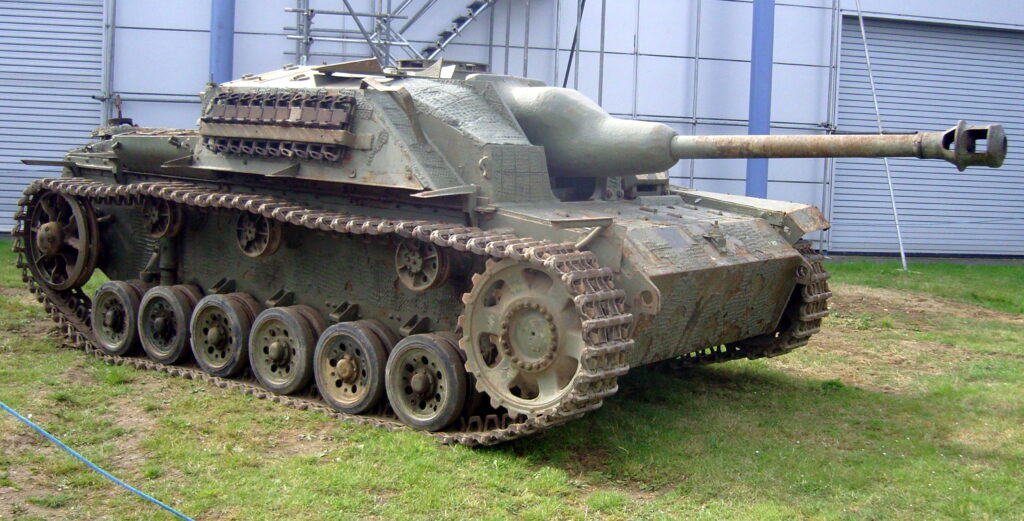
Such ambush tactics were used by the German general Erwin Rommel against the allied tank formations in the North African theatre, during World War 2. Instead of using German tanks against alied tanks, he used the German tanks to lure the allied tanks into predetermined positions surrounded by mountains, where antitank guns, infantry, and mines were waiting to ambush the allied tanks. Once the ambush started, the German tanks could perticipate in it. These clever tactics earned him the title of Desert Fox.
These tactics were utilized later in various battles around the world. In the battle of Asal Uttar during the 1965 Indo-Pak war for example, Indian army lured a large formation of Pakistani tanks, mainly M47 and M48 Pattons, into sugarcane fields that had been deliberately flooded. The flood turned the fields into peatbogs that the Pakistani tanks got stuck in. These tanks were than taken out by antitank guns, infantry, and Indian tanks surrounding the flooded fields. Over the years, antitank guns have mostly been replaced by antitank missiles. But the tactics remain the same.
Such traps are known as horseshoe traps, since the arrangement of antitank platforms resembles a horseshoe, with the region where the enemy tanks are supposed to be trapped being in the centre, so that the antitank platforms can concentrate their fire on a small area in the centre while staying dispersed themselves. It is tactics like these, that allowed the Indian forces to repel the Pakistani offensive in the war, despite the fact that in the category of tanks, the Indian forces posessed mainly World War 2 era M4 Shermans, while the Pakistani forces posessed the more modern Pattons developed in the 50s.
Tanks are not suited to be used in static positions in place of antitank guns or missiles, and are supposed to be used in this role only when other options are not available. The Germans for example, used their tanks in static positions later on in World War 2, because they could not afford to be too mobile due to the dearth of fuel. Much of Germany’s fuel production and supply capacity had been destroyed by allied bombing by that stage.
The use of tanks in static positions meant that despite the longer range and heavier frontal armor of German tanks like the Tiger, Soviet tanks like T-34 could use their mobility to quickly come close to german tanks from sideways and target their weaker side regions. The video below describes antitank tactics in more detail.
Moreover, tanks aren’t nearly as numerous as the infantry and other platforms. Hence, most areas on the frontline won’t have tanks deployed. And even after an enemy tank offensive starts, fending off tanks using guns, mines and missiles might be followed not by the arrival of friendly tanks, which could take a long time to be transported to the area, but by air or artillery strikes, which could be available much more readily. In the battle of Longewala during the 1971 Indo-Pak war, for example, the Indian forces fended off a Pakistani tank formation using only mines and antitank guns in the night, until sunrise, when the Indian Air Force Hunter aircraft could take out the tanks.
It’s Even Better To Take Out Enemy Tanks Before They Make Contact With Your Ground Forces
Using cheaper platforms like antitank guns, missiles, and mines, instead of your own tanks to take on enemy tanks, is a much better tactic. It doesn’t just prevent your tanks from being exposed to enemy tanks, but frees up your tanks to do what they are good at- take out the other, easier targets in the enemy’s rear, using their mobility. But it is even better to take out enemy tanks when they are still in their staging areas in the rear of the enemy lines, instead of engeging them with cheap antitank platforms once they get rolling.
This can be done by rocket and cannon artillery, if the staging area of the tanks is less than 100 km behind the enemy lines. If the tanks are staged further behind, or if they are on the move towards the frontlines, then bombing them from the air is the way to go. Such missions by strike aircraft are called air interdiction missions, and the aircraft utilize cluster antitank munitions for this purpose. One such cluster munition is the BLU-108 sensor fused munition, that is contained in the CBU-105 cluster bomb. You can read more about BLU-108 in this previous post, and the video below shows it working.
Similar sensor fuzed submunitions are also available for carriage inside 155 mm artillery rounds, and possibly for higher caliber rocket artillery as well. The video below shows one such submunition, that can be used to target tanks deep behind enemy lines using artillery.
Attack helicopters like the AH-64 Apache and Mi-35 are another platform type that can be used to take out tanks. But while they are far more survivable against enemy tanks than your own tanks would be, their ability to operate deep behind enemy lines might be limited compared to strike aircraft. These attack helicopters, therefore, can be used both behind enemy lines to some extent, and to take out enemy tanks on the frontlines. Drones can also be used in antitank role. The Turkish Bayraktar TB2 drones and Israeli Harops for example, were used effectively in antitank role by Azerbijani forces in the Nagorno Karabak war. These drones are far cheaper, expendible, and readily deployable, than crewed aircraft and helicopters.
The Larger Picture
What has been discussed here doesn’t just apply to tanks. It applies to most combat platforms. It’s not as easy to take on a samurai head on as a samurai yourself, as it is to kill the samurai in his sleep, by sneaking into his sleeping chamber as a ninja. It might not look sexy. It might even be looked upon as unfair. But it’s the best way to win the fight. It’s better to destroy the enemy combat aircraft in a preemptive strike while they are still on ground at their base, than it is to take them on in aireal dogfights once they have taken off.
This does not mean air superiority fighters and interceptors are wasteful. Even if you destroy much of the enemy air force on ground, there will still be some enemy warplanes that will manage to get airborne and will need to be engaged by air superiority fighters and interceptors. But the number of ground attack sorties is usually far larger than the number of air superiority sorties in a war.
Such a preemptive strike again doesn’t look nearly as sexy as an aireal dogfight. But just like the ninja samurai example, it’s the more efficient way to do things. This is why it has been utilized time and again in wars. The Germans preemptively bombed Soviet airfields in the opening stages of Operation Barbarossa, the Israeli air force preemptively bombed Egyptian airfields during the Six Day war, destroying most of the Egyptian air force on ground, and in the First Gulf War, much of the Iraqi warplanes were taken out when the Iraqi airfields were attacked by cruise missiles and strike aircraft.
The reason that this approach works better is that when you field the same type of platforms not against easier targets but against each other, you increase their chances of being destroyed, and reduce their impact on the war. This results in a war of attrition. A grinding war that consumes vast resources on both sides until the side with more resources overwhelms the other. This situation is supposed to be avoided as far as possible. It’s better to field warplanes against airfields and not other warplanes. Similarily, it’s better to field tanks against softer targets like trucks, APCs, fortifications, fuel and ammunition storages, and not against other tanks.
This is also why the comparisions between different tanks are somewhat nonsensical from the perspective of a war. Because tanks have more to fear from antitank mines, missiles, attack helicopters and aircraft, than enemy tanks. It also means that even if a large portion of your tank inventory consists of old tanks of previous generation, they would still be useful, as their primary task is to take out not enemy tanks, but softer targets in the enemy’s rear, against which they would still be effective. A T-72 might not be able to stand against an M1 Abrams, but will be a nightmare for supply trucks, APCs, IFVs bunkers, and fuel and ammunition storages.
The Stuart light tank from World War 2 wouldn’t stand against any heavier tank. But it played a major role in helping Indian forces defeat Pakistani forces in the Ladakh region during the 1947 Indo Pak war. The following lines from this previous post of mine elaborate on this.
Due to the altitude and terrain of this region, Pakistani forces did not expect the presence of any armor on the Indian side, and had not deployed any armor of their own either. So the sight of Stuarts came as a complete shock to them. Indians had transported the Stuarts in partially dismantled condition along mule paths from Srinagar all the way to Ladakh. Their light weight and small size had allowed them to traverse narrow paths, steep slopes and fragile bridges that no heavy tank could. When Stuarts arrived at the site of action, the unarmored Pakistani forces were easy pickings.
Source
A Hypothetical Scenario
Let’s compile all these concepts by considering a hypothetical scenario. In the diagram below, the black, horizontal line streaked across the page depicts the border between two warring countries. There are three cities on the enemy side, numbered 1, 2 and 3. The orange arrows are enemy supply lines consisting of trucks carrying ammunition, fuel and food. The red arrow is an enemy armored thrust into your territory, consisting of tanks and APCs. The blue arc below this thrust are your static defences consisting of antitank guns, antitank missiles, and mines. The dark blue arrows are your own armored thrusts consisting of tanks and APCs, and the light blue arrows are your air and artillery strikes.

In this first strategy, you would concentrate everything you have, including aircraft, artillery, static defences, and tanks, on the advancing enemy tanks. This looks good on paper. But it allows the enemy to endlessly supply its armored thrust with all the ammunition, fuel, food, and additional tanks from cities on its side of the border. This is a grinding war of attrition, with both the enemy’s and your forces fighting in a small region, resulting in large scale damage, and yet you not being able to cut down the momentum of the enemy.
It also doesn’t use your warplanes, artillery, and tanks, to do what they are really good at. Because instead of crossing into enemy territory to attack its rear, these platforms are being kept on your side of the border to take on the advancing enemy tanks. This might actually become necessary if the enemy tank column is too powerful to be stopped by static defences alone. But you must strive to go for the enemy supply lines in the rear at the first oppurtunity.
As they say, amatures talk tactics, veterans talk logistics. The alternate strategy depicted below is how an experienced tactician would go about. The advancing enemy tanks would be met with static defences, as well as some air and artillery strikes. But your own tanks would cross into enemy territory through weak points on the border, start cutting off the enemy supply lines in orange, and eventually cutting off city 3 entirely. The enemy would attempt to attack these advancing tank columns by sending its own tanks towards them, from cities 1 and 2 (red arrows). To nutralize these enemy tank columns before they reach your tanks, you could target them with air and artillery strikes (light blue arrows).
Depending on factors like how far away these enemy tanks are from the border, and how readily available aircraft and artillery are, you could target them with either aircraft or artillery. This strategy utilizes the capabilities of all your different platforms optimally, using them to do what they do best. And this is the more efficient way to fight the war, making it harder for the enemy to target your platforms, since they are not just more dispersed but also on the move, and making it hard for the enemy to keep its advancing tanks supplied with fuel, ammunition, and food.
Also, notice that this strategy prevents tank on tank warfare between your tanks and enemy tanks. And this isn’t the case with tanks alone. Your platforms are attacking targets that are less capable than themselves. Your combat aircraft are attacking enemy tanks, and your tanks are attacking enemy supply lines consisting of trucks. And on a broader field, your long range cruise and ballistic missiles would be attacking the enemy combat aircraft while they are still at their airbases, before they can attack your combat aircraft in suffecient numbers. Such a strategy minimizes attrition by increasing the chances of survival of your platforms.

You could also target the enemy supply lines with air and artillery strikes instead of tanks. But permenantly cutting off these supply lines and surrounding city 3 would require constant presence on the ground, in the form of tanks and APCs. The enemy would also have to divide its tank inventory between the armored thrust into your territory from city 3, and reserves in cities 1 and 2 to attack your own advancing tanks, reducing the power of the armored thrust from city 3.
You might consider using your tanks to attack city 3, instead of moving them around the city to surround it. After all, city 3 is the logistical node where all three enemy supply lines converge to support the enemy armored thrust into your territory, so capturing this one node might be easier than travelling long distances to sut off the three supply lines leading into it. But this would be a mistake, because tanks are suited for maneuvering on open plains surrounding cities, and not urban warfare inside cities, where there would be little space to maneuver and plenty of hideoutes that enemy infantry could use to ambush the tanks.
City 3 could be captured, if necessary, by your infantry after it has been surrounded and cut off from the rest of the enemy territory by your tanks. Alternatively, the vital targets in city 3 could be taken out by artillery and air strikes. A documentary series by Star Media details how World War 2 in the Eastern European theatre played out, and shows how both the Soviets and the Germans used their tank forces not to capture cities by entering them, but to surround them and cut them off. In the instances where tanks were indeed used in urban warfare without first surrounding the city, they faced major difficulties, like in the Battle of Stalingrad.
This doesn’t mean tank on tank warfare is something that can be ignored. As war is inherintly an unpredictible series of events, the warring sides need to prepare for every scenario. The enemy airpower, artillery, and static defences, would also have to be factored in when you send your tanks into the enemy territory. For example, just as you could target the staging areas of enemy forces in the cities 1, 2 and 3 with artillery and airstrikes, the enemy could do the same to your own staging areas. And ultimately, which side enjoys numerical superiority and a larger budget would also matter. So even this diagram is an oversimplification of how an actual war might play out.
But events like tank on tank warfare should be minimized as far as possible. And when it is inevitable, the objective should be to use one’s own tanks only as long as other support measures like artillery and airstrikes don’t arrive to neutralize enemy tanks. The first diagram above depicts a purely defensive strategy, while the second depicts a strategy consisting the right balance of offense and defense, with tanks being used in offensive role. And as they say, offense is the best form of defense.
